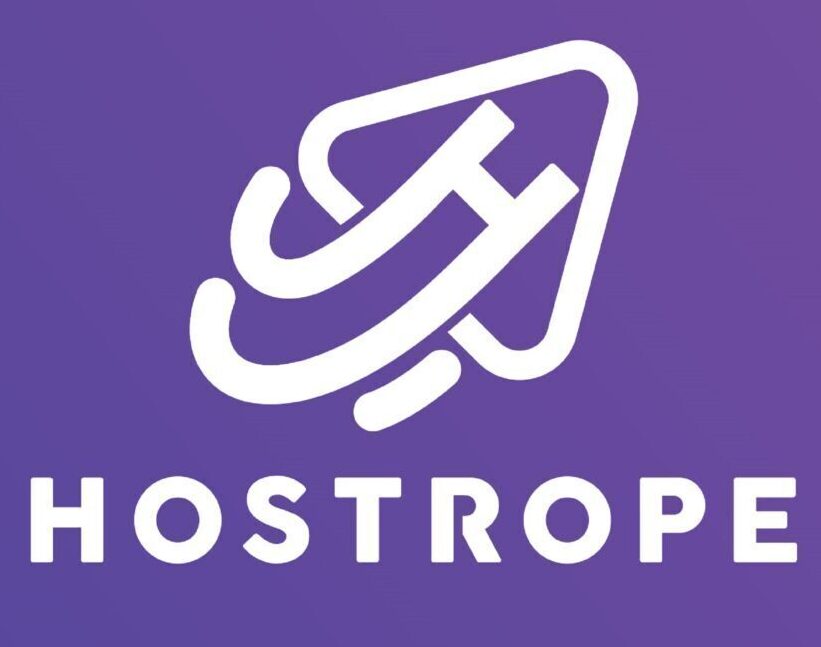Last updated 1st Nov 2024
In the rapidly evolving world of online retail, selecting the right e-commerce platform is crucial for the success of your business. Among the plethora of options available, Shopify stands out as one of the most popular and user-friendly platforms. This in-depth review will delve into the features, pricing, advantages, disadvantages, and overall value of Shopify, helping you decide if it’s the right choice for your online store.
1. Introduction
The rise of e-commerce has transformed the retail landscape, providing businesses with unprecedented opportunities to reach customers across the globe. As online shopping continues to grow, the demand for effective e-commerce solutions has skyrocketed. Shopify has emerged as a leading platform that empowers entrepreneurs to create and manage their online stores efficiently.
This review aims to provide a comprehensive understanding of Shopify, helping you make an informed decision about whether it is the right e-commerce solution for your needs. We will explore its features, pricing structure, pros and cons, and how it stacks up against competitors.
2. What is Shopify?
Shopify is a cloud-based e-commerce platform that enables businesses to create and manage online stores. Founded in 2006 in Canada, Shopify has grown exponentially, serving over a million businesses in more than 175 countries. It is designed to accommodate everyone from small startups to large enterprises, offering a range of customizable templates and tools to streamline the online selling process.
The platform allows users to sell products through various channels, including a dedicated online store, social media platforms, and online marketplaces. Shopify’s extensive app ecosystem further enhances its functionality, providing users with the ability to customize their stores to fit their unique business needs.
3. Key Features of Shopify
Shopify offers a robust set of features that make it an attractive option for e-commerce businesses. Here, we break down some of the key features that set Shopify apart:
3.1 User-Friendly Interface
One of Shopify’s standout features is its intuitive user interface. The platform is designed for users of all skill levels, making it easy for beginners to set up and manage their online stores without any coding knowledge. The dashboard provides a clear overview of your sales, traffic, and orders, allowing you to navigate effortlessly through various features.
The ease of use extends to adding products, managing inventory, and configuring settings. Users can quickly familiarize themselves with the platform, reducing the learning curve associated with launching an online store.
3.2 Customizable Templates
Shopify offers a wide array of professionally designed themes that can be easily customized to fit your brand’s identity. Users can choose from over 70 free and premium themes, ensuring that there’s something for every budget and aesthetic preference.
The themes are not only visually appealing but also optimized for conversion, helping to create a seamless shopping experience for customers. Customization options include altering colors, fonts, and layouts, allowing you to create a unique brand presence without requiring extensive design skills.
3.3 Robust Product Management
Managing your products on Shopify is straightforward. You can easily add, edit, or remove products, categorize them, and set variants (like sizes and colors). Shopify also allows for bulk import/export of products using CSV files, saving time for larger inventories.
Inventory management features include tracking stock levels, setting low-stock alerts, and managing product variants efficiently. Additionally, you can organize products into collections to make navigation easier for customers, improving the overall shopping experience.
3.4 Payment Gateway Integration
Shopify supports various payment gateways, including Shopify Payments, PayPal, Stripe, and more. This flexibility allows you to cater to different customer preferences, with support for over 100 currencies.
Shopify Payments, its built-in payment processor, enables businesses to accept credit card payments without incurring additional transaction fees, making it a cost-effective choice for many users. Additionally, the platform provides options for local payment methods, enhancing accessibility for international customers.
3.5 SEO and Marketing Tools
Shopify is equipped with built-in SEO features, making it easier to optimize your store for search engines. It includes customizable title tags, meta descriptions, and URL structures, allowing you to improve your search engine rankings effectively.
Beyond SEO, Shopify offers various marketing tools to help you drive traffic and conversions. Users can create discount codes, run email marketing campaigns, and leverage abandoned cart recovery features to recover lost sales. Integrations with popular marketing platforms like Mailchimp and Klaviyo further enhance your marketing capabilities.
3.6 Mobile Responsiveness
In an era where mobile shopping is on the rise, Shopify ensures that all themes are mobile-responsive. This means your store will look great and function seamlessly on any device, whether it’s a smartphone, tablet, or desktop.
Shopify’s mobile optimization is crucial for enhancing the customer experience, as a significant portion of online shopping occurs via mobile devices. The platform also offers a mobile app for store management, allowing users to monitor sales, fulfill orders, and respond to customer inquiries on the go.
3.7 24/7 Customer Support
Shopify provides round-the-clock customer support via live chat, email, and phone. Their extensive knowledge base and community forums offer valuable resources for troubleshooting and learning best practices.
The customer support team is responsive and knowledgeable, helping users resolve issues quickly and efficiently. Whether you’re facing technical difficulties or have questions about features, Shopify’s support is readily available to assist you.
3.8 App Ecosystem
The Shopify App Store features thousands of third-party apps that extend the functionality of your store. From inventory management to customer service, you can find tools to enhance your e-commerce experience.
These apps cover various categories, including marketing, sales, customer service, shipping, and analytics. Some popular apps include Oberlo (for dropshipping), Yotpo (for product reviews), and QuickBooks (for accounting). The ability to integrate these apps allows you to customize your store’s capabilities according to your business needs.
4. Pricing Plans
Shopify offers several pricing tiers to accommodate businesses of all sizes. Each plan comes with different features and capabilities:
- Basic Shopify: $39/month
- Ideal for new businesses, includes an online store, unlimited products, 24/7 support, and basic reporting.
- Shopify: $105/month
- Offers additional features such as professional reports, gift cards, and more advanced analytics.
- Advanced Shopify: $399/month
- Provides advanced reporting, third-party calculated shipping rates, and lower credit card processing fees.
- Shopify Plus: Starting at $2,000/month
- Aimed at larger businesses with custom needs and higher transaction volumes, offering enhanced features and support.
Note: All plans come with a 14-day free trial, allowing you to explore the platform before committing. Additionally, Shopify charges transaction fees for using third-party payment gateways unless you use Shopify Payments.
Cost Considerations
When evaluating Shopify’s pricing, it’s essential to consider additional costs that may arise, including:
- App Fees: While many apps are free, some premium apps come with monthly fees that can add up.
- Theme Costs: Premium themes may require a one-time payment ranging from $140 to $350.
- Transaction Fees: If you choose to use third-party payment gateways, be aware of transaction fees that can range from 0.5% to 2% depending on your plan.
Considering these factors will help you understand the overall cost of using Shopify and enable you to budget effectively.
5. Pros of Shopify
1. Ease of Use
Shopify’s user-friendly interface is one of its strongest selling points. The platform is designed to be accessible for users with varying levels of technical expertise. The intuitive dashboard and clear navigation make it easy to manage your store without needing extensive technical skills.
2. Customizability
With a wide range of customizable themes and a robust app ecosystem, Shopify allows you to create a unique online store tailored to your brand. You can easily modify the look and feel of your site to resonate with your target audience.
3. Reliable Performance
Shopify is known for its uptime and reliability, ensuring that your online store remains accessible to customers at all times. The platform is built on a secure infrastructure that can handle high volumes of traffic, making it a dependable choice for growing businesses.
4. SEO-Friendly
Shopify’s built-in SEO features help improve your store’s visibility on search engines, driving organic traffic to your site. The platform’s ability to create clean, SEO-friendly URLs, along with customizable meta tags and alt text, enhances your chances of ranking higher in search results.
5. Mobile Compatibility
Given the increasing trend of mobile shopping, Shopify’s mobile-responsive themes ensure that your store looks great and functions well on any device. This adaptability enhances the customer experience and can lead to higher conversion rates.
6. Cons of Shopify
1. Transaction Fees
One notable drawback of Shopify is the transaction fees it charges for using third-party payment gateways. Unless you use Shopify Payments, you’ll incur fees that can add up, particularly for businesses with high sales volumes.
2. Monthly Costs
While Shopify offers a variety of pricing plans, costs can escalate quickly, especially if you opt for premium themes or additional apps. For small businesses or startups, these ongoing expenses may be a significant consideration.
3. Limited Customization for Advanced Users
Although Shopify provides numerous customization options, users with advanced technical skills may find limitations in modifying the platform. Certain customizations may require hiring a developer, which can increase costs and complicate the process.
7. Shopify vs. Competitors
When choosing an e-commerce platform, it’s essential to compare Shopify against its competitors. Here’s how it stacks up against some popular alternatives:
7.1 Shopify vs. WooCommerce
WooCommerce is a WordPress plugin that transforms a standard WordPress site into an online store. Here are some comparisons:
- Ease of Use: Shopify is more user-friendly for beginners, while WooCommerce requires familiarity with WordPress.
- Customization: WooCommerce offers extensive customization options through coding and plugins, appealing to advanced users.
- Cost: WooCommerce is free to use, but costs can accumulate through hosting, premium themes, and plugins, while Shopify has straightforward pricing plans.
7.2 Shopify vs. BigCommerce
BigCommerce is another popular e-commerce platform that offers many similar features to Shopify. Here’s a comparison:
- Pricing: BigCommerce often provides more features at a lower starting price, making it attractive for larger businesses.
- Built-in Features: BigCommerce offers more built-in features, such as advanced SEO tools and multi-channel selling options, which may reduce the need for third-party apps.
- Ease of Use: Shopify is generally regarded as more user-friendly, particularly for newcomers to e-commerce.
7.3 Shopify vs. Wix
Wix is primarily known as a website builder but also offers e-commerce functionality. Here are some key points of comparison:
- Flexibility: Wix provides more design flexibility with its drag-and-drop editor, allowing for greater creativity in site design.
- E-commerce Features: Shopify is more robust for e-commerce features, making it a better choice for businesses focused solely on online sales.
- Ease of Use: Both platforms are user-friendly, but Shopify is more focused on e-commerce, providing a smoother experience for online selling.
8. Case Studies: Success Stories with Shopify
To further illustrate the potential of Shopify, let’s explore a few success stories from businesses that have thrived on the platform.
Case Study 1: Gymshark
Gymshark, a fitness apparel brand, started as a small venture in a garage. Leveraging Shopify’s robust features, Gymshark scaled rapidly, generating over $1 billion in sales within a few years. The brand’s success is attributed to its effective use of social media marketing, influencer partnerships, and the seamless shopping experience provided by Shopify.
Case Study 2: Allbirds
Allbirds, a sustainable footwear brand, utilized Shopify to launch its online store quickly. The company’s focus on eco-friendly materials resonated with consumers, resulting in rapid growth. By harnessing Shopify’s tools for product management and marketing, Allbirds effectively scaled its operations while maintaining its commitment to sustainability.
Case Study 3: Fashion Nova
Fashion Nova, a trendy fashion brand, leveraged Shopify to build an online presence that captured a young audience. Through strategic social media marketing and influencer collaborations, the brand grew into a multi-million-dollar enterprise. Shopify’s ability to handle high traffic volumes during peak sales periods was crucial to Fashion Nova’s success.
These case studies exemplify how Shopify can empower businesses to scale and succeed in the competitive e-commerce landscape. The platform’s user-friendly features and scalability make it an ideal choice for entrepreneurs looking to launch and grow their online stores.
9. Best Practices for Using Shopify
To maximize your success on Shopify, consider implementing the following best practices:
1. Optimize for SEO
Take advantage of Shopify’s built-in SEO features by customizing title tags, meta descriptions, and URLs for your products. Conduct keyword research to identify terms your target audience is searching for and incorporate them into your content.
2. Leverage Social Media
Utilize social media platforms to promote your products and engage with customers. Consider running paid advertising campaigns to reach a broader audience and drive traffic to your Shopify store.
3. Utilize Abandoned Cart Recovery
Implement Shopify’s abandoned cart recovery feature to capture potential lost sales. Send follow-up emails to remind customers of their abandoned carts and offer incentives, such as discounts, to encourage them to complete their purchases.
4. Monitor Analytics
Regularly monitor your store’s analytics to understand customer behavior and identify areas for improvement. Use this data to inform your marketing strategies and optimize product offerings.
5. Provide Excellent Customer Service
Prioritize customer service to enhance the shopping experience. Respond promptly to inquiries, address customer concerns, and consider using chatbots for real-time support.
10. Conclusion
Shopify has established itself as a leader in the e-commerce platform space, offering a comprehensive suite of tools for online selling. Its user-friendly interface, extensive features, and reliable support make it an excellent choice for businesses looking to launch or grow their online presence.
However, potential users should carefully consider their budget and the associated costs, particularly transaction fees and app expenses. While Shopify may not be the cheapest option available, its robust functionality and ease of use can justify the investment for many businesses.
Whether you’re a small business owner or an entrepreneur with bigger ambitions, Shopify provides the resources and flexibility needed to create a successful online store. With a free trial available, there’s no better time to explore what Shopify has to offer.
As the e-commerce landscape continues to evolve, staying informed about the latest trends and technologies will be essential for sustaining your business’s growth. With Shopify as your e-commerce partner, you’ll be well-equipped to navigate the challenges and opportunities of the online marketplace.












The articles you write help me a lot and I like the topic
Thank you for providing me with these article examples. May I ask you a question?
Thanks for sharing. I read many of your blog posts, cool, your blog is very good.
I want reading and I think this website got some really useful stuff on it! .